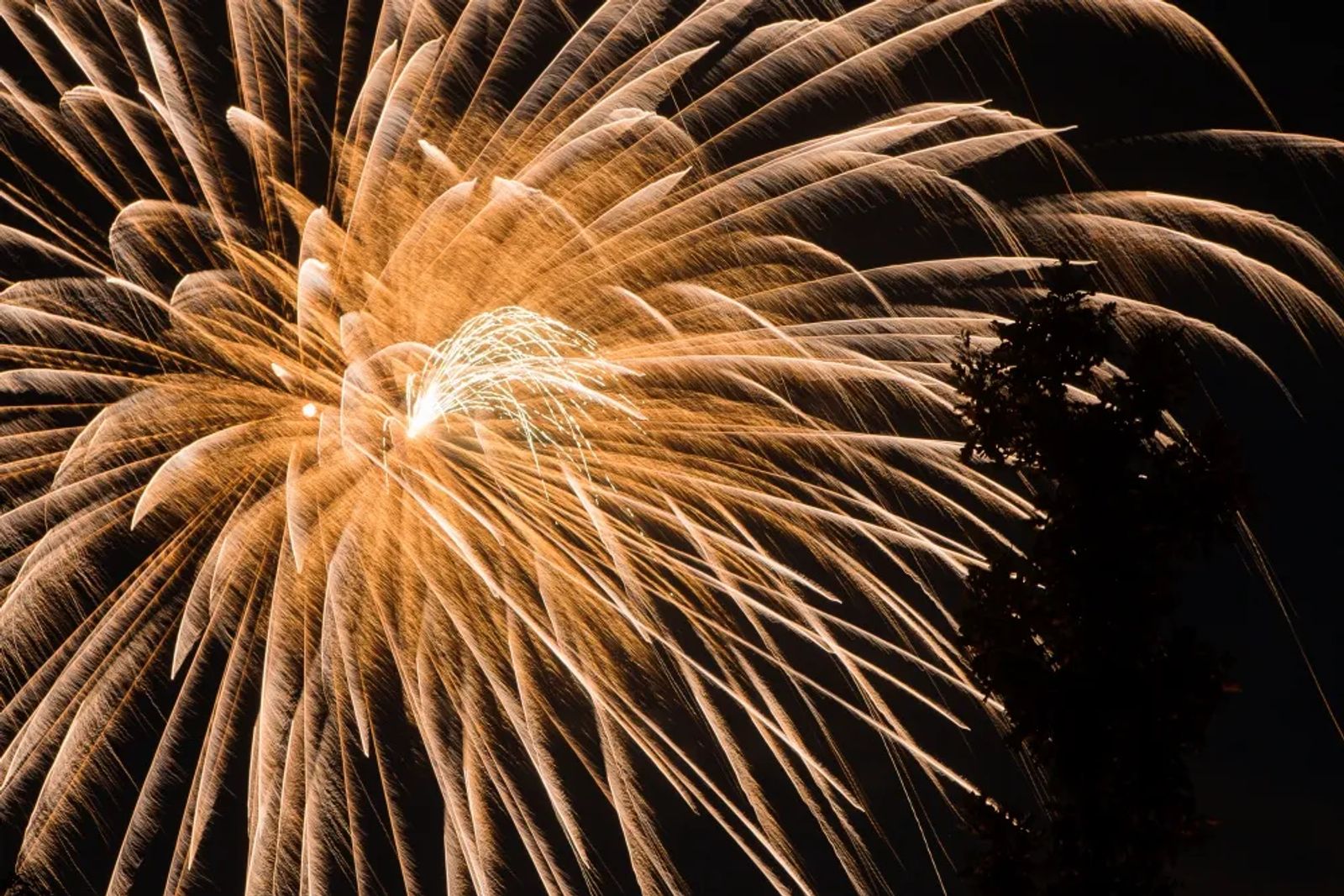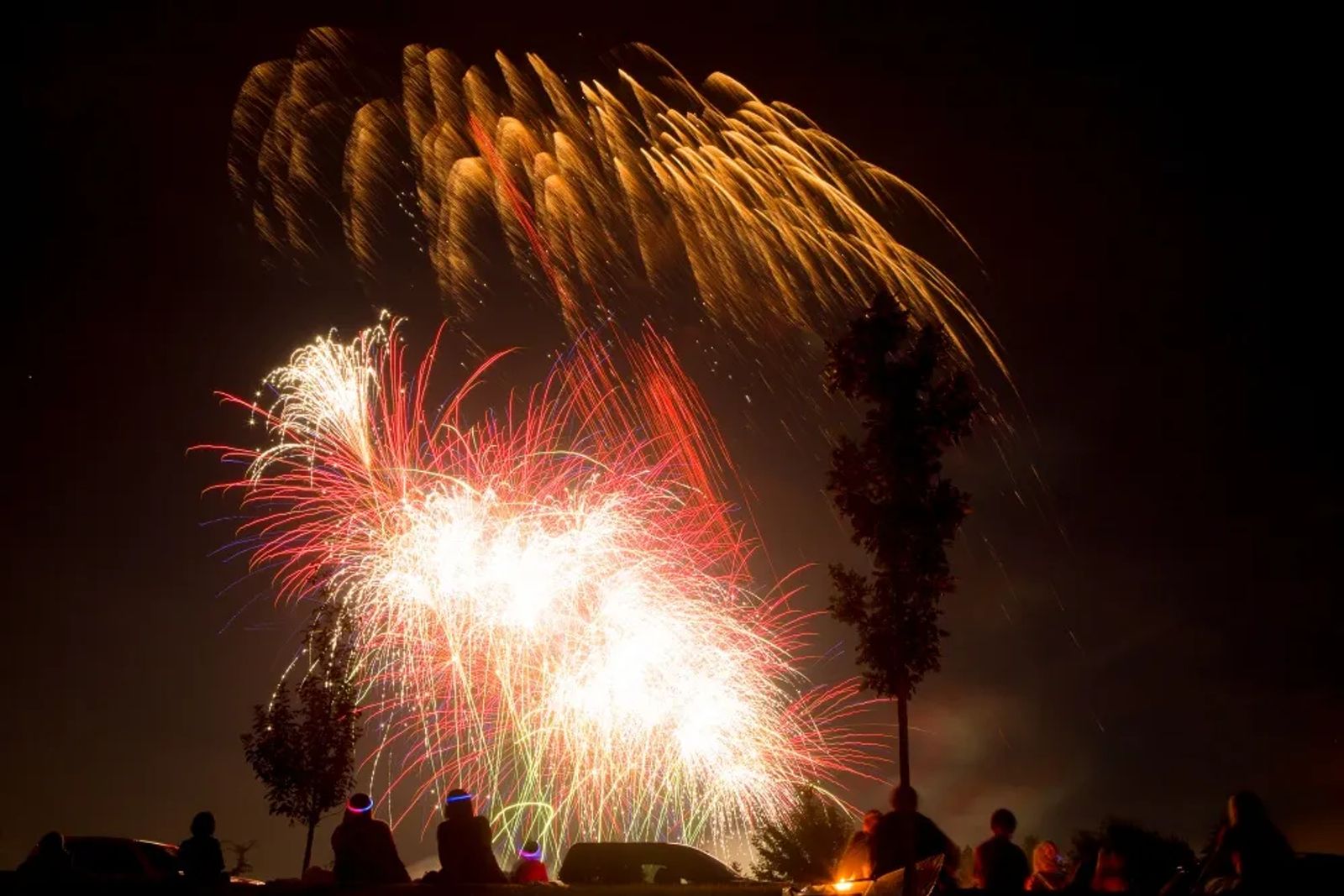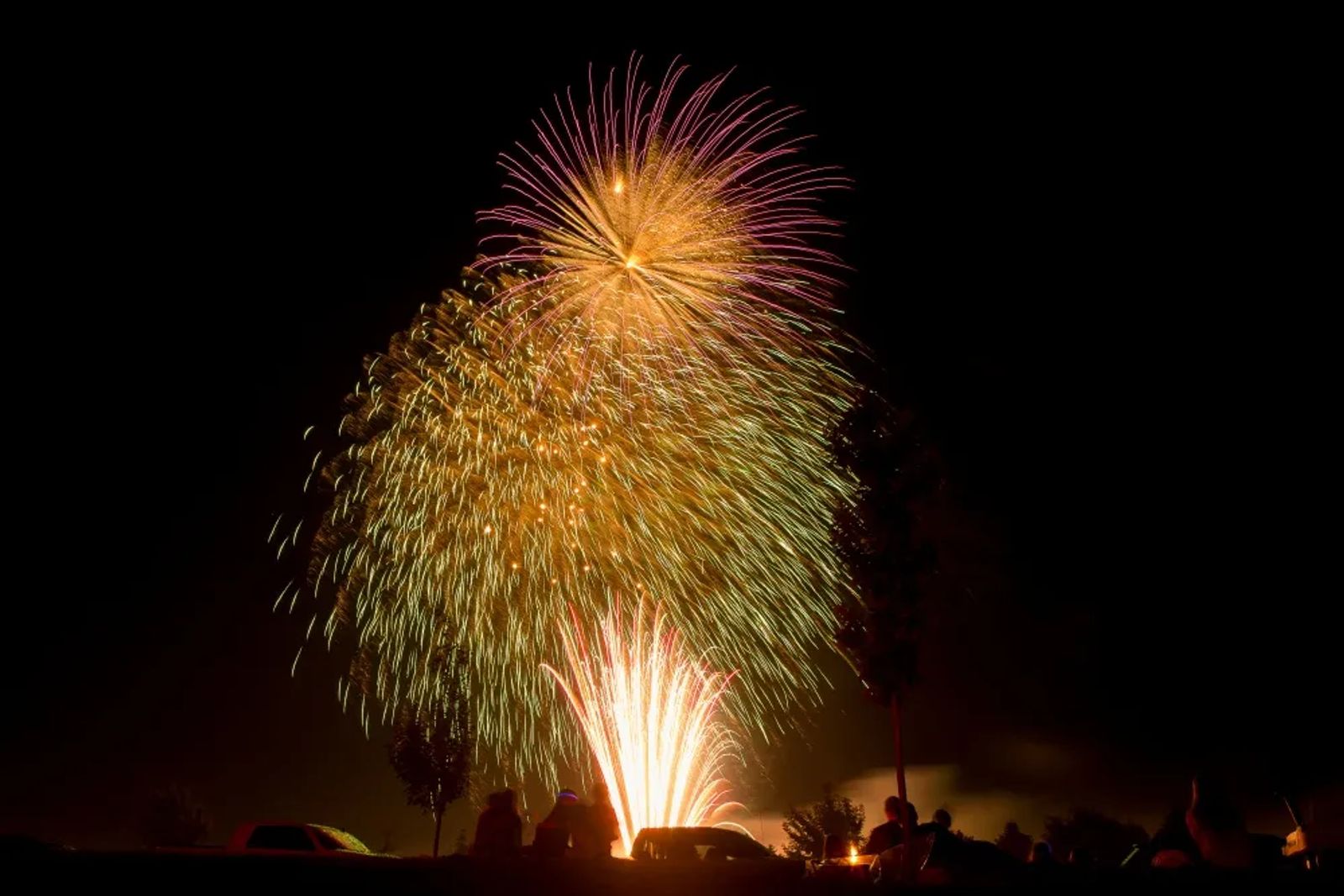
Ka-Boom! The Science of Fireworks
July 2021
by stephanie hobby | photos by lovely hitchcock
It’s that time of year when nighttime booms split the summer air, and the sky explodes with crackling sparks of color. Because fireworks are so common, it might be easy to overlook the hours upon hours of detailed, behind-the-scenes work needed to launch a dazzling display. The reality is that the pyrotechnicians need a range of physics, chemistry, math, and engineering expertise to put on those spectacular shows while also keeping everyone safe.
It all starts, of course, with gunpowder. While many legends surround the creation of fireworks, everyone agrees they originated in China more than 1,000 years ago. Some theorize that the first firecrackers were made by packing gunpowder into hollow shafts of bamboo. Somewhat surprisingly, the basic workings haven't changed much since then. Today, plastic and cardboard have replaced bamboo, and pyrotechnicians have a few more tricks up their sleeves than their early predecessors. But the underlying concepts are the same.
“What has changed is how we've been able to put them together with computer programming. The way we can put them together and time them has changed a lot because of technology,” said Katrina Netzel, a former science teacher, fireworks aficionado, and now a product developer for Billings-based Home Science Tools.
While physics and chemistry immediately come to mind, controlled bursts of electricity are absolutely crucial to making today’s fireworks displays happen safely. “A really big part of it is electrical engineering, because, yes, you can set up an individual firework, and that's cool, but when we see the really big displays that are done by cities or towns or companies, it's really more like they're working on a computer,” Netzel explained. Each explosive has to be timed exactly right, and the setup for a large-scale show can take days. "They choose what they want to happen and then they arrange them in a sequence so that they can have those things happening at different times."
Aerial displays need what’s called a lift charge to get off the ground. It's still gunpowder but is typically in a small packet on the outside of the spherical shell. The fuse runs through it and continues to the center of the shell. So when the fuse is lit, it's going to hit the lift charge packet on the outside first, launching the shell high into the air. Generally speaking, the larger the shell, the higher it will go, but most max out around 1,000 feet.

As the shell is rocketing skyward, the fuse is still sparking, quickly making its way to the center of the shell. Shells are packed with individual balls known as "stars," comprised of gunpowder, color-producing chemicals, and salts. As the fuse hits the gunpowder packed in the center of the shell, the heat and pressure get uncontainable. The whole thing bursts, causing a satisfying boom. At the same time, the individual stars are sent hurtling outward, bursting into flames and creating the sparks we see. The colors result from different chemicals burning: copper produces blue sparks, strontium creates red, sodium leads to yellow, barium produces green, and magnesium is white.
Pyrotechnicians have gotten really creative over the years and have learned that by packing stars in different formations, they can produce different shapes and images. Picture an apple; if you know where to slice it, you’ll find the five-pointed star of seeds inside. Some pyrotechnic shells produce two-dimensional images like smiley faces; if you cut them in half at the right spot, you’ll see the explosive stars arranged in a smiley face. Additionally, those shells need to be launched at the correct angle for viewers to see them - if you look at a two-dimensional image from the side, you’ll only see a line.
For fireworks that shoot out in all directions, the stars line the entire inside of the shell. For two-stage fireworks (such as ones that look like they start red and turn white), pyrotechnicians build a layer of stars with one color and add another layer of a different color closer to the center. Then, with even more innovative packing, they can create the illusion of movement, like a school of swimming fish.

Fireworks are naturally awe-inspiring, and there’s something very nostalgic about a picnic dinner before taking in a show to celebrate our independence. This year, you could take a few minutes to stroll by the rows of mortars before the show or encourage your family to examine your own backyard display and try to predict what each one will do based on its shape. Have a safe and fun Fourth!
Aaaand Action!
Home Science Tools is launching a new series of science kits this summer as part of its Science Unlocked curriculum. One kit, called “Good to Glow,” demonstrates the chemistry behind fireworks. “We do what’s called a flame test, where you can burn metal salts and see what colors are produced. Those different colors are caused by having different wavelengths of light produced when electrons gain and then lose energy. So electrons in the atoms are gaining energy from the heat and then producing those colors with different wavelengths,” Netzel said.
This month, Home Science Tools is releasing 30 kits from which to choose, with another 60 in the works. The kits are offered at three levels: Wonder, for grades K-2 to encourage natural curiosity; Accelerate, for grades 3-7, with an emphasis on accelerating their love of learning; and Launch, designed for grades 8-12, to develop logical and formal modes of thinking and reasoning.
“Science Unlocked is a leading, all-in-one learning experience for science at home. We strip away the hours-long lesson planning and intimidation by combining a comprehensive, ongoing program with lessons, supplies and excitement for all ages and abilities delivered right to your door. Each kit is packed with enough material for one month of real science and positions homeschool families to watch wonder unfold, learning accelerate, and young minds launch into a better future,” said Tanna Yerger, product marketing lead for Home Science Tools.
For more information, visit www.HomeScienceTools.com and use the code SIMPLY10 for 10 percent off your first box through July.
Originally printed in the July 2021 issue of Simply Local Magazine
Never miss an issue, check out SLM's digital editions here!





